NR-447: Collaborative Leadership in Healthcare Course Assignments & Discussions Study Guide
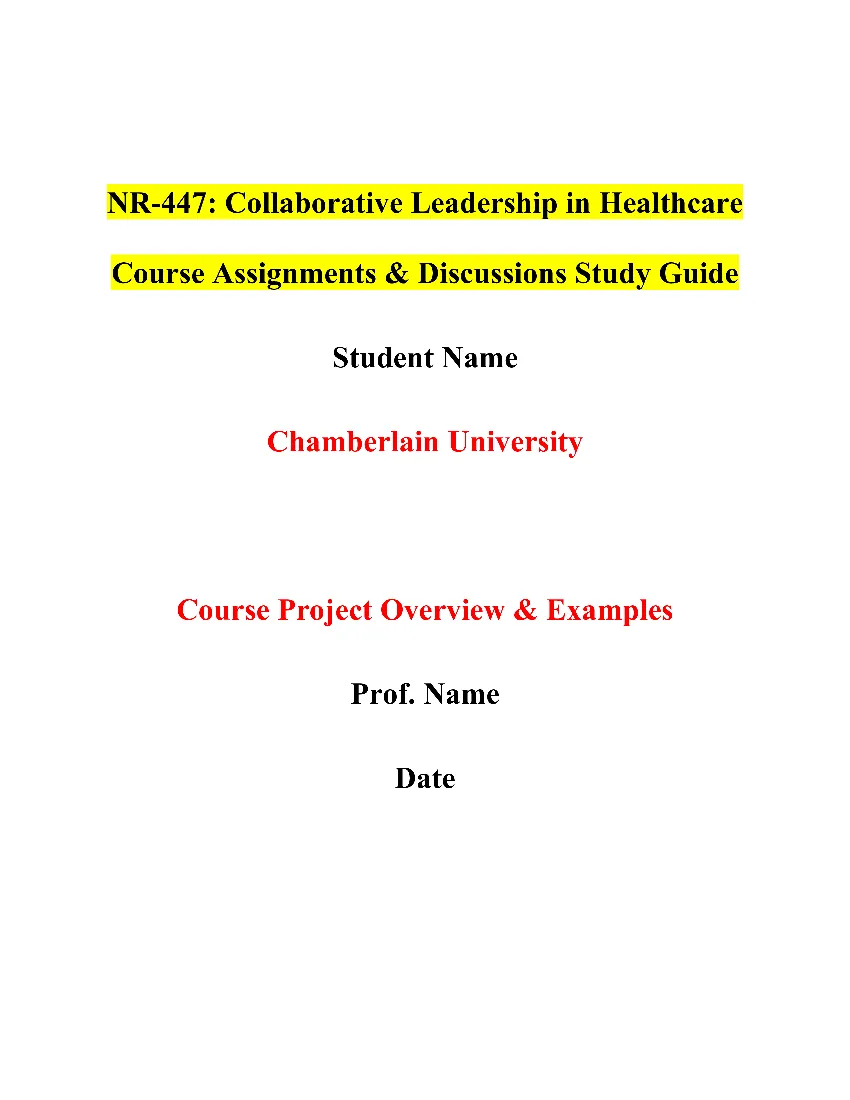 NR-447: Collaborative Leadership in Healthcare Course Description
NR-447: Collaborative Leadership in Healthcare Course Description
Contact Hours: Lecture – 64, Lab – 0, Clinical – 0
Semester Hours: Theory 4
This course, for RN to BSN option students, is designed to expand the scope of nursing practice. The course and the selected collaborative learning activities provided to RN to BSN option students, focuses on leadership and management aspects of the professional nurse. The emphasis is on the role of the nurse in providing nursing care within the healthcare setting.
Prerequisites: NR-351, NR-361
NR-447: Collaborative Leadership in Healthcare Course Syllabus
NR 447 Week 1 Discussion: Reflection on Leadership Self-Assessment
NR 447 Week 2 Assignment: Direct Care Project Part 1: Assessment and Diagnosis
NR 447 Week 3 Discussion: Procedures and Evidence (Question to answer A-M)
NR 447 Week 3 Discussion: Procedures and Evidence (Question to answer N-Z)
NR 447 Week 4 Assignment: Direct Care Project Part 2 – Planning the Presentation
NR 447 Week 5 Discussion: Reflection on Knowledge of Competencies
NR 447 Week 5 Assignment: Collaborative Healthcare Project Part 3: PRE-Survey
NR 447 Week 6 Assignment: Direct Care Project Part 4 – Evaluating the Project
NR 447 Week 7 Discussion: Technology in Healthcare (Question to answer N-Z)
NR 447 Week 8 Discussion: Retention and Recruitment
For top-quality coursework writing help and assignment writing services, trust Nursing Custom Writing. Our expert team delivers 100% original human-written work tailored to your needs. Contact us via phone, WhatsApp, or live chat for assistance today and get the most reliable research paper help!
Syllabus Overview
| Course Number: |
NR447 |
| Course Title: |
RN Collaborative Healthcare |
| Course Credits: |
4 credits |
| Prerequisite: |
NR351 |
Course Description
This course, for RN to BSN option students, is designed to expand the scope of nursing practice. The course and the selected managerial experiential learning activities provided to RN to BSN option students, focuses on leadership and management aspects of the professional nurse. The emphasis is on the role of the nurse in providing nursing care within the healthcare setting.
You can also read another study guide on nursing assignments for students from another post on NR-446: Collaborative Healthcare Course Assignments & Discussions.
Clinical Compliance Requirements
All clinical compliance requirements must be satisfied, and necessary health forms must be on file with the corporate clinical office prior to registration for any clinical course. Failure to comply will result in the student being withdrawn from the class roster. Students not in compliance may be refused entry to class or clinical and will not be excused for any absences. A complete list of these requirements is at http://my.chamberlain.edu under the clinical section or by contacting clinicalcompliance@chamberlain.edu.
Textbooks and Resources
Required Textbooks
The following books are required for this course:
Access E-Book
Finkelman, A. (2012). Leadership and management for nurses: Core competencies for quality care (2nd ed.). Boston, MA: Pearson.
Access E-Book
Finkelman, A. (2016). Leadership and management for nurses: Core competencies for quality care (3rd ed.). Boston, MA: Pearson.
American Psychological Association. (2010). Publication manual of the American Psychological Association (6th ed.). Washington, DC: Author.
Optional Textbooks
The following books are required for this course:
Physical Books and Supplies
To obtain all your books and supplies, visit the online Chamberlain bookstore at https://bookstore.chamberlain.edu/.
eBook Details
First Time Using VitalSource?
Step 1: View the VitalSource Video
Step 2: Register with VitalSource Bookshelf Online
- Click the cover or title of your eBook. A new window will open.
- Enter email address and password. Bookshelf Online will open.
Step 3: Access the Desktop and Mobile Versions
You must complete Step 2 prior to using the desktop or mobile versions.
Already Registered? 3 Ways to Access Your eBooks
Online
Access your eBook by clicking on the book cover or title in the syllabus page. Bookshelf Online will open.
Desktop
Download your eBooks and use them whether you’re connected to the Internet or not.
Mobile
Download the app and get your eBooks on your iPhone, iPad, or Android device.
Program Outcomes
The outcomes for the Bachelor of Science in Nursing (BSN) degree program are as follows:
- Provides individualized comprehensive care based on theories and principles of nursing and related disciplines to individuals, families, aggregates and communities, from entry to the healthcare system through long-term planning.
- Demonstrates leadership and collaboration with consumers and other healthcare providers in providing care and/or delegating responsibilities for health promotion, illness prevention, health restoration, health maintenance and rehabilitative activities.
- Communicates effectively with patient populations and other healthcare providers in managing the healthcare of individuals, families, aggregates and communities.
- Integrates clinical judgment in professional decision making and implementation of the nursing process.
- Demonstrates responsibility for continued personal and professional development through enrollment in graduate education, continuing education degree programs, professional reading and participation in professional organizations and community service.
- Implements professional nursing standards by practicing within the legal definitions of nursing practice and acts in accordance with the nursing code of ethics and American Nurses Association (ANA) standards of practice.
- Practices in established professional roles consistent with entry-level BSN graduates to provide cost-effective, quality healthcare to consumers in structured and unstructured settings.
- Incorporates evidence-based practice in the provision of professional nursing care to individuals, families, aggregates and communities.
Course Outcomes
Chamberlain College of Nursing courses are built to align course content with specific Course Outcomes (COs). The COs define the learning objectives that the student will be required to comprehend and demonstrate by course completion. The COs that will be covered in detail each week can be found in the Overview page in that particular week. Whenever possible, a reference will be made from a particular assignment or discussion back to the CO that it emphasizes.
Upon completion of this course, the student will be able to do the following.
- Apply leadership concepts, skills, and decision making in the provision of high-quality nursing care, healthcare team management, and the oversight and accountability for care delivery in a variety of settings. (PO 2)
- Implement patient safety and quality improvement initiatives within the context of the interprofessional team through communication and relationship building. (PO 3)
- Participate in the development and implementation of imaginative and creative strategies to enable systems to change. (PO 7)
- Apply concepts of leadership and team coordination to promote the achievement of safe and quality outcomes of care for diverse populations. (PO 4)
- Apply improvement methods, based on data from the outcomes of care processes, to design and test changes to continuously improve the quality and safety of healthcare. (PO 8)
- Develop a personal awareness of complex organizational systems, and integrate values and beliefs with organizational mission. (PO 7)
- Apply leadership concepts in the development and initiation of effective plans for the microsystems and system-wide practice improvements that will improve the quality of healthcare delivery. (POs 2 and 3)
- Apply concepts of quality and safety using structure, process, and outcome measures to identify clinical questions as the beginning process of changing current practice. (PO 8)
Course Schedule
| Week, COs, and Topics |
Readings |
Assignments |
| Week 1
CO 1
Conceptual Bases for Nursing Leadership and Management |
Finkelman, A. (2016). Leadership and management for nurses: Core competencies for quality care (3rd ed.). Boston, MA: Pearson.
- Chapter 1: Conceptual Base for Leadership and Management
- Chapter 2: Health Care Policy, Legal Issues, and Ethics in Health Care Delivery
- Appendix B: Health Care Reform Legislation 2010
|
Graded Discussion Topic |
| Week 2
COs 1 and 7
Standards, Essentials, and Core Competencies |
Finkelman, A. (2016). Leadership and management for nurses: Core competencies for quality care (3rd ed.). Boston, MA: Pearson.
- Chapter 9: Managing Patient-Centered Care
- Chapter 18: Implementing Healthcare Quality Improvement (pp. 434-437)
Required:
Kramer, M., Schmalenberg, C., Maguire, P., Brewer, B., Burke, R., Chmielewski, L., … Meeks-Sjostrom, D. (2009). Walk the talk: Promoting control of nursing practice and a patient-centered culture. Critical Care Nurse, 29(3), 77–93. http://proxy.chamberlain.edu:8080/login?url=http://search.ebscohost.com/login.aspx?direct=true&db=edswsc&AN=000266533800011&site=eds-live&scope=site |
Week 2 AACN Essentials Self-Assessment
Graded Discussion Topic |
| Week 3
COs 2 and 3
Core Competency: Work in Interdisciplinary/ Interprofessional Teams |
Finkelman, A. (2016). Leadership and management for nurses: Core competencies for quality care (3rd ed.). Boston, MA: Pearson.
- Chapter 4: Organizational Structure for Effective Care Delivery
- Chapter 12: Developing Interprofessional and Intraprofessional Teams
- Chapter 13: Improving Teamwork: Collaboration, Coordination, and Conflict Resolution
- Chapter 14: Effective Staff Communication and Working Relationships
|
Conflict Resolution Paper
Graded Discussion Topic |
| Week 4
COs 1 and 7
Core Competency: Use Evidence-Based Practice |
Finkelman, A. (2016). Leadership and management for nurses: Core competencies for quality care (3rd ed.). Boston, MA: Pearson.
- Chapter 16: Evidence-based Practice and Management
- Appendix A: Nurse Executive Competencies
|
Graded Discussion Topic |
| Week 5
COs 5, 7, and 8
Core Competency: Apply Quality Improvement |
Finkelman, A. (2016). Leadership and management for nurses: Core competencies for quality care (3rd ed.). Boston, MA: Pearson.
- Chapter 17: Health Care Quality: A Critical Health Policy Issue
- Chapter 18: Implementing Health Care Quality Improvement
Required website for Discussion:
Rau, J. (2015). Half of nation’s hospitals fail again to escape Medicare’s readmission penalties. Kaiser Health News. Retrieved from http://khn.org/news/half-of-nations-hospitals-fail-again-to-escape-medicares-readmission-penalties/ |
Nursing Care Models Paper
Graded Discussion Topic |
| Week 6
COs 3 and 6
Nursing Leadership Skills: Health Policy, Legal and Ethical Issues |
Finkelman, A. (2016). Leadership and management for nurses: Core competencies for quality care (3rd ed.). Boston, MA: Pearson.
- Chapter 15: Delegation for Effective Outcomes
Required:
Lachman, V. D. (2015). Ethical issues in the disruptive behaviors of incivility, bullying, and horizontal/lateral violence. Urologic Nursing, 35(1), 39-42. Retrieved from http://proxy.chamberlain.edu:8080/login?url=http://search.ebscohost.com/login.aspx?direct=true&db=a2h&AN=100927729&site=eds-live&scope=site |
Workplace Civility Index Assessment
Performance Measurement PowerPoint Slide Show
Graded Discussion Topic |
| Week 7
COs 5 and 7
Nursing Leadership Skills: Decision Making, Planning, Finances |
Finkelman, A. (2016). Leadership and management for nurses: Core competencies for quality care (3rd ed.). Boston, MA: Pearson.
- Chapter 3: Operational and Strategic Planning: Change, Innovation, and Decision Making
- Chapter 5: Health CareEconomics
Required:
Huston, C. (2010). What skills will the nurse leaders of 2020 need? (2010) Kai Tiaki Nursing New Zealand, 16(6), 14–15. Retrieved from http://proxy.chamberlain.edu:8080/login?url=http://search.ebscohost.com/login.aspx?direct=true&db=ccm&AN=105060080&site=ehost-live |
Graded Discussion Topic |
| Week 8
CO 6
Nursing Leadership Skills: Mentoring, Reflection, and the Future |
Video: Nurses: Their Vital Role in Transforming Healthcare. |
Week 8 AACN Essentials Self-Assessment
Graded Discussion Topic |
Late Assignment Policy
Students are expected to submit assignments by the time they are due. Assignments submitted after the due date and time will receive a deduction of 10% of the total points possible for that assignment for each day the assignment is late. Assignments will be accepted, with penalty as described, up to a maximum of three days late, after which point a zero will be recorded for the assignment.
In the event of an emergency that prevents timely submission of an assignment, students may petition their instructor for a waiver of the late submission grade reduction. The instructor will review the student’s rationale for the request and make a determination based on the merits of the student’s appeal. Consideration of the student’s total course performance to date will be a contributing factor in the determination. Students should continue to attend class, actively participate, and complete other assignments while the appeal is pending.
This Policy applies to assignments that contribute to the numerical calculation of the course letter grade.
Due Dates for Assignments and Exams
Unless otherwise specified, the following applies.
- Access to the course begins on Sunday at 12:01 a.m. (MT) during preview week.
- All assignments are to be submitted on or before Sunday at the end of the specified week that they are due by 11:59 p.m. (MT).
- All quizzes and exams, if applicable in your course, are to be completed on or before Saturday at the end of the specified week that they open by 11:59 p.m.(MT).
Note: In Week 8, for the DNP, MSN, RN-BSN, and Prelicensure BSN, the assignments would be due by Wednesday at 11:59 p.m. MT.
Faculty Grading/Response Schedule
Grades for Discussion will be posted by Tuesday night after the due date, except for grades for Week 8 Discussion, which will be posted by Friday at the end of Week 8. For all other work (papers, projects, etc.), grades will be posted by Friday night after the due date. An announcement will be posted if these deadlines cannot be met.
Faculty will respond to student emails or questions in the Q & A Forum within 48 hours.
Concerns about faculty grading and responsiveness may be sent to the director and the dean of the RN-to-BSN Option by clicking on the Online Administrator’s Message link under Course Home.
Evaluation Methods
The maximum score in this class is 1,000 points. The categories, which contribute to your final grade, are weighted as follows.
| Assignment |
Points |
Weighting |
Discussions
(50 points per topic, one topic per week for Weeks 1-8) |
400 |
40% |
| Week 2 AACN Essentials Self-Assessment |
0 |
0% |
Conflict Resolution Paper
(Week 3) |
200 |
20% |
Nursing Care Models Paper
(Week 5) |
200 |
20% |
Workplace Civility Index Assessment
(Week 6) |
0 |
0% |
Performance Measurement PowerPoint Slide Show
(Week 6) |
200 |
20% |
| Week 8 AACN Essentials Self-Assessment |
0 |
0% |
| Total Points |
1,000 |
100% |
No extra credit assignments are permitted for any reason.
The course grade is determined by transferring the total number of points possible in the course to a percentage grade. There is no rounding of grades. Percentages of 0.5% or higher are not raised to the next whole number. A final grade of 76% (letter grade C) is required to pass the course.
| Letter Grade |
Points |
Percentage |
| A |
940–1,000 |
94% to 100% |
| A- |
920–939 |
92% to 93% |
| B+ |
890–919 |
89% to 91% |
| B |
860–889 |
86% to 88% |
| B- |
840–859 |
84% to 85% |
| C+ |
810–839 |
81% to 83% |
| C |
760–809 |
76% to 80% |
| F |
759 and below |
75% and below |
Chamberlain College of Nursing students are expected to conduct themselves in an ethical and professional manner. All academic assignments, including papers, exams, projects, and in-class assignments must be the original work of the individual student unless otherwise specified by the instructor. Academic or clinical dishonesty are exceptionally serious offenses and may result in a failing grade on an assignment, failure in the course, or dismissal from the College.
Students agree that by taking this course all required papers, threaded discussions or other written learning activities may be subject to submission for textual similarity review to Turnitin.com for the detection of plagiarism. All submitted papers will be included as source documents in the Turnitin.com reference database solely for the purpose of detecting plagiarism of such papers. Use of the Turnitin.com service is subject to the Terms and Conditions of Use posted on the Turnitin.com site.
Participation: RN-to-BSN
In discussions, you, as a student, will interact with your instructor and classmates to explore topics related to the content of this course. You will be graded for the following.
- Attendance
Discussions (graded): Discussions are a critical learning experience in the online classroom. Participation in all discussions is required.
- Guidelines and Rubric for Discussions
PURPOSE: Threaded discussions are designed to promote dialogue between faculty and students, and students and their peers. In the discussions students:
- Demonstrate understanding of concepts for the week
- Integrate scholarly resources
- Engage in meaningful dialogue with classmates
- Express opinions clearly and logically, in a professional manner
Participation Requirement: You are required to post a minimum of three (3) times in each graded discussion. These three (3) posts must be on a minimum of two (2) separate days. You must respond to the initial discussion question by 11:59 p.m. MT on Wednesday.
Participation points: It is expected that you will meet the minimum participation requirement described above. If not:
- You will receive a 10% point deduction in a thread if your response to the initial question is not posted by 11:59 p.m. MT on Wednesday
- You will also receive a 10% point deduction in a thread if you do not post at least three (3) times in each thread on at least two (2) separate days.
- Threaded Discussion Guiding Principles
The ideas and beliefs underpinning the threaded discussions (TDs) guide students through engaging dialogues as they achieve the desired learning outcomes/competencies associated with their course in a manner that empowers them to organize, integrate, apply and critically appraise their knowledge to their selected field of practice. The use of TDs provides students with opportunities to contribute level-appropriate knowledge and experience to the topic in a safe, caring, and fluid environment that models professional and social interaction. The TD’s ebb and flow is based upon the composition of student and faculty interaction in the quest for relevant scholarship. Participation in the TDs generates opportunities for students to actively engage in the written ideas of others by carefully reading, researching, reflecting, and responding to the contributions of their peers and course faculty. TDs foster the development of members into a community of learners as they share ideas and inquiries, consider perspectives that may be different from their own, and integrate knowledge from other disciplines.
- Participation Guidelines
You are required to post a minimum of three (3) times in each graded discussion. These three (3) posts must be on a minimum of two (2) separate days. You must respond to the initial discussion question by 11:59 p.m. MT on Wednesday. Discussions for each week close on Sunday at 11:59 p.m. Mountain Time (MT). To receive credit for a week’s discussion, students may begin posting no earlier than the Sunday immediately before each week opens. For courses with Week 8 graded discussions, the threads will close on Wednesday at 11:59 p.m. MT. All discussion requirements must be met by that deadline.
- Grading Rubric
| Discussion Criteria |
A
(100%)
Outstanding or highest level of performance |
B
(87%)
Very good or high level of performance |
C
(76%)
Competent or satisfactory level of performance |
F
(0)
Poor or failing or unsatisfactory level of performance |
Answers the initial graded threaded discussion question(s)/topic(s), demonstrating knowledge and understanding of concepts for the week.
16 points |
Addresses all aspects of the initial discussion question(s) applying experiences, knowledge, and understanding regarding all weekly concepts.
16 points |
Addresses most aspects of the initial discussion question(s) applying experiences, knowledge, and understanding of most of the weekly concepts.
14 points |
Addresses some aspects of the initial discussion question(s) applying experiences, knowledge, and understanding of some of the weekly concepts.
12 points |
Minimally addresses the initial discussion question(s) or does not address the initial question(s).
0 points |
Integrates evidence to support discussion. Sources are credited.*
( APA format not required)
12 points |
Integrates evidence to support your discussion from:
- assigned readings** OR online lessons, AND
- at least one outside scholarly source.***
Sources are credited.*
12 points |
Integrates evidence to support discussion from:
- assigned readings OR online lesson.
Sources are credited.*
10 points |
Integrates evidence to support discussion only from an outside source with no mention of assigned reading or lesson.
Sources are credited.*
9 points |
Does not integrate any evidence.
0 points |
Engages in meaningful dialogue with classmates or instructor before the end of the week.
14 points |
Responds to a classmate and/or instructor’s post furthering the dialogue by providing more information and clarification, thereby adding much depth to the discussion.
14 points |
Responds to a classmate and/or instructor furthering the dialogue by adding some depth to the discussion.
12 points |
Responds to a classmate and/or instructor but does not further the discussion.
10 points |
No response post to another student or instructor.
0 points |
Communicates in a professional manner.
8 points |
Presents information using clear and concise language in an organized manner (minimal errors in English grammar, spelling, syntax, and punctuation).
8 points |
Presents information in an organized manner (few errors in English grammar, spelling, syntax, and punctuation).
7 points |
Presents information using understandable language but is somewhat disorganized (some errors in English grammar, spelling, syntax, and punctuation).
6 points |
Presents information that is not clear, logical, professional or organized to the point that the reader has difficulty understanding the message (numerous errors in English grammar, spelling, syntax, and/or punctuation).
0 points |
PARTICIPATION:
Response to initial question: Responds to initial discussion question(s) by
Wednesday, 11:59 p.m. M.T. |
0 points lost
Student posts an answer to the initial discussion question(s) by Wednesday, 11:59 p . m. MT. |
-5 points
Student does not post an answer to the initial discussion question(s) by Wednesday, 11:59 p . m. MT. |
PARTICIPATION
Total posts: Participates in the discussion thread at least three times on at least two different days. |
0 points lost
Posts in the discussion at least three times AND on two different days. |
-5 points
Posts fewer than three times OR does not participate on at least two different days. |
NOTES:
* Credited means stating where the information came from (specific article, text, or lesson). Examples: Our text discusses…. The information from our lesson states…, Smith (2010) claimed that…, Mary Manners (personal communication, November 17, 2011)…. APA formatting is not required. |
| ** Assigned readings are those listed on the syllabus or assignments page as required reading. This may include text readings, required articles, or required websites. |
| *** Scholarly source – per the APA Guidelines in Course Resources, only scholarly sources should be used in assignments. These include peer reviewed publications, government reports, or sources written by a professional or scholar in the field. Wikipedia, Wikis, .com website or blogs should not be used as anyone can add to these. For the discussions, reputable internet sources such as websites by government agencies (URL ends in .gov) and respected organizations (often ends in .org) can be counted as scholarly sources. Outside sources do not include assigned required readings. |
| NOTE: A zero is the lowest score that a student can be assigned. |
- Chamberlain Policies
Students are required to comply with Chamberlain College of Nursing’s academic policies. To access Chamberlain’s policy on academic integrity (and all other Chamberlain policies), please review the information in your Undergraduate Student Handbook, Undergraduate Catalog, and the policies outlined in this course.
The Undergraduate Catalog describes the technical requirements for students. Sufficient technology and Internet access is required to complete Chamberlain College of Nursing online classes. Technical requirements include, but are not limited to:
- Hardware/Software Requirements
- Supported Operating Systems
- Productivity Tools (Microsoft Office, VitalSource Bookshelf)
- Internet Access o Internet Connections
- Email
- Supported Browsers
- Browser Settings
- Plug-ins
- Screen Settings
- Hardware Specifications
- Computer Internet Security
- Operating System Updates
Chamberlain College of Nursing is committed to providing reasonable accommodations for eligible students with documented disabilities as defined by state and federal laws relating to the Americans with Disabilities Act (ADA). Our intent is to ensure that every student who makes a request for accommodations under ADA is advised of the accommodation process as promptly as possible. If you are a student with a verifiable documented disability, and you can provide medical documentation regarding this disability, then contact our ADA Officer at adaofficer@chamberlain.edu for more information on how to receive ADA accommodations in your online classes or fax your request to 630-596-1651.
Webliography
The purpose of the Webliography is to provide students with annotated bibliographies of world wide websites relevant to their courses. These websites are not meant to be all inclusive of what is available for each course’s subjects and have not been sanctioned as academically rigorous or scholarly by Chamberlain College of Nursing. Please exercise caution when using these websites for course assignments and references.
NR-447: Collaborative Leadership in Healthcare Course Assignments & Discussions Study Guide
Chamberlain-College-Of-Nursing NR 447 Week 7 Discussion Our Future Leaders NEW
Our Future Leaders
In Huston’s (2010) brief, but impressive article (required reading this Week), the author outlines several leadership competencies that EVERY nurse leader will need for 2020. That year is not too far in the future, is it?
Select one of the eight leadership competencies Huston described and relate it to your own leadership of nurses and nursing. This should promote a robust Discussion as we come from different clinical and nonclinical perspectives.
Discuss how the BSN-prepared nurse can assist a nurse leader in the budgeting process by contributing data readily available to the staff nurse.
Huston, C. (2010). What skills will the nurse leaders of 2020 need? (2010). Kai Tiaki Nursing New Zealand, 16(6), 14–15. Click HERE to link
Chamberlain-College-Of-Nursing NR 447 Week 1 Discussion: The Affordable Care Act NEW
The Affordable Care Act
Healthcare reform is a term that is ever present in our practice settings and will not disappear any time soon.
Share with the class implementation of the Affordable Care Act in your organization. (If you are not working as a nurse, think about what was happening when you were a prelicensure student)
How did your fellow healthcare workers react to implementation of the ACA?
How were citizens in your community impacted?
Chamberlain-College-Of-Nursing NR 447 Week 2 Discussion: AACN Essentials Self Assessment and Patient Centered Care NEW
AACN Essentials Self-Assessment and Patient-Centered Care
Locate and complete the Self-Assessment of the AACN Essentials located in Doc Sharing (Week 2).
Follow the directions on the form. Note your total score. Next, review the article cited below:
Kramer, M., Schmalenberg, C., Maguire, P., Brewer, B., Burke, R., Chmielewski, L., … Meeks-Sjostrom, D. (2009). Walk the talk: Promoting control of nursing practice and a patient-centered culture. Critical Care Nurse, 29(3), 77–93. Click to link.
Answer the following:
If you are willing, please share your total score on the AACN Essentials Self-Assessment
Candidly identify and share with your classmates areas where knowledge, skills or abilities (KSAs) are lacking?
Describe the relationship between the Essentials and your new-found knowledge about Patient Centered Care. Are there opportunities for your improvement?
Chamberlain-College-Of-Nursing NR 447 Week 3 Assignment: Conflict Resolution Paper NEW
Conflict Resolution Paper:
Guidelines Purpose
The purpose of this Assignment is to learn how to identify and effectively manage conflicts that arise in care delivery settings resulting in better management of patient care, including appropriate delegation.
You will gain insight into conflict management strategies and develop a plan to collaborate with a potential nurse leader about the conflict and its impact in a practice setting.
Course Outcomes
Completion of this Assignment enables the student to meet the following course outcomes.
- CO 1: Apply leadership concepts, skills, and decision making in the provision of high-quality nursing care, healthcare team management, and the oversight and accountability for care delivery in a variety of settings. (PO 2)
- CO3: Participate in the development and implementation of imaginative and creative strategies to enablesystems to change. (PO 7)
- CO 6: Develop a personal awareness of complex organizational systems, and integrate values and beliefs withorganizational mission. (PO 7)
- CO 7: Apply leadership concepts in the development and initiation of effective plans for the microsystems and system-wide practice improvements that will improve the quality of healthcare delivery. (POs 2 and 3)
Due Dates
This Assignment is to be submitted to the Dropboxby Sunday, 11:59 p.m. MT, end of Week 3.
Points
This Assignment is worth 200 points. Directions 1. Read Finkelman (2012), pp. 361–376. 2. Observe nurses in a care delivery setting. Identify a recurring conflict with the potential to negatively impact patient care.
Decide if delegation was an issue in the conflict. This should be from your practice setting or prelicensure experiences.
Provide details of what happened, including who was involved, what was said, where it occurred, and what was the outcome that led you to decide the conflict was unresolved.
Identify the type of conflict. Explain your rationale for selecting this type.
Outline the four stages of conflict, as described in our text, and how they relate to your example.
Propose strategies to resolve the conflict. Search scholarly sources in the library and the Internet for evidence on what may be effective.
Discuss if delegation was an issue in the conflict. Be specific.
Describe how you would collaborate with a nurse leader to reach consensus on the best strategy to employ to deal with the conflict.
Describe the rationale for selecting the best strategy.
Provide a summary or conclusion about this experience or Assignment and how you may deal with conflict more effectively in the future.
Write a 5–7 page paper (not including the title or References pages) using APA format that includes the following.
Describe an unresolved (recurring) conflict that you experienced or observed. Identify the type of conflict.
Provide details of what happened, including who was involved, what was said, where it occurred, and what was the outcome that led you to decide the conflict was unresolved.
Outline the four stages of conflict, as described in Finkelman, and how the stages relate to your example. Decide if delegation was an issue in the conflict. Be specific.
Describe the strategies for conflict resolution and how you would collaborate with a nurse leader to resolve the conflict. Cites resources.
Provide a conclusion or summary about this experience and how you may deal with conflict more effectively in the future.
Submit to the Dropbox by the end of Week 3.
Conflict and Collaboration
Please watch the video and listen to the dialogue before posting. Second Life Video Transcript At times the needs of our families conflict with our work responsibilities. Could this possibly be the underlying issue here?
Explain the conflict resolution skills displayed by the leader in the scenario. On a scale of 1-10, how would you rate those of the leader.
How might earlier collaboration have been beneficial?
Some organizations utilize non Registered Nurses in the Case Manager role. What additional skills, knowledge and attributes would the BSN-prepared Registered Nurse bring to case management in this scenario?
Chamberlain-College-Of-Nursing NR 447 Week 4 Assignment: Nursing Care Models Paper NEW
Nursing Care Models Paper:
Guidelines Purpose
The purpose of this Assignment is to identify nursing care models utilized in today’s various health care settings and enhance your knowledge of how models impact the management of care and may influence delegation. You will assess the effectiveness of models and determine how you would collaborate with a nurse leader to identify opportunities for improvement to ensure quality, safety and staff satisfaction.
Course Outcomes
Completion of this Assignment enables the student to meet the following course outcomes.
- CO#1: Apply leadership concepts, skills, and decision making in the provision of high quality nursing care, healthcare team management, and the oversight and accountability for care delivery in a variety of settings. (PO #2)
- CO#2: Implement patient safety and quality improvement initiatives within the context of the interprofessional team through communication and relationship building. (PO #3)
- CO#3: Participate in the development and implementation of imaginative and creative strategies to enable systems to change. (PO #7)
- CO#6: Develop a personal awareness of complex organizational systems and integrate values and beliefs with organizational mission. (PO #7)
- CO#7: Apply leadership concepts in the development and initiation of effective plans for the microsystems and/or system-wide practice improvements that will improve the quality of healthcare delivery. (PO #2, and #3)
- CO#8: Apply concepts of quality and safety using structure, process, and outcome measures to identify clinical questions as the beginning process of changing current practice. (PO#8)
Due Dates
This Assignment is to be submitted to the Dropbox by Sunday, 11:59 p.m. MT, end of Week 4.
Points
This Assignment is worth 200 points.
Directions
Read your text, Finkelman (2012), pp- 118- 127.
Observe staff in delivery of nursing care provided. Practice settings may vary depending on availability.
Identify the model of nursing care that you observed. Be specific about what you observed, who was doing what, when, how and what led you to identify the particular model.
Write a 5-7 page paper that includes the following:
Review and summarize two scholarly resources (not including your text) related to the nursing care model you observed in the practice setting.
Review and summarize two scholarly resources (not including your text) related to a nursing care model that is different from the one you observed in the practice setting.
Discuss your observations about how the current nursing care model is being implemented. Be specific.
Recommend a different nursing care model that could be implemented to improve quality of nursing care, safety and staff satisfaction. Be specific.
Provide a summary/conclusion about this experience/Assignment and what you learned about nursing care models.
Write your paper using APA format. Submit to the Dropbox
Chamberlain-College-Of-Nursing NR 447 Week 4 Discussion: Transformational Nursing Leaders NEW
Transformational Nursing Leaders
Review Appendix A, Sections I–V in Finkelman (2012, pp. 510–515)
Select one of the sections and share how your chief nurse executive demonstrates expertise in these competencies. Your comments should be about the “highest nursing leader” in your organization.
Typically this is the leader who represents nurses and nursing to the governing board.
In your own words, explain the differences between a transactional nursing leader and a transformational nursing leader. What one is more like your Nurse Executive?
Describe how the Nurse Executive “leads the charge” for transformational leadership in an organization where you work or have done prelicensure clinical experiences.
Chamberlain-College-Of-Nursing NR 447 Week 5 Discussion: Patient Outcomes NEW
Patient Outcomes
Review the story at the link below before posting to the Discussion:
Rau, J. (2015). Half of nation’s hospitals fail again to escape Medicare’s readmission penalties. Kaiser Health News. Retrieved from.. After you have finished, consider how you would respond to the following situation:
Your local hospital has received notice from CMS (Centers for Medicare and Medicaid) regarding their readmission rates.
As a BSN prepared nurse, you have been asked to serve as a consultant to suggest a new Quality (Performance) Improvement process for ONE of the areas of deficiency. Write some brief steps (suggestions) for improvement as you contemplate accepting the consulting opportunity.
Share practice improvements utilized from your own clinical nursing experiences that have led to enhanced patient outcomes.
Chamberlain-College-Of-Nursing NR 447 Week 6 Assignment: Performance Measurement PowerPoint NEW
Performance Measurement PowerPoint Slideshow:
Guidelines Purpose
The purpose of this Assignment is to locate and compare performance measurement data on common health conditions for the hospitals in your area. You will investigate the Centers for Medicare and Medicaid Services websites and locate hospital compare data for hospitals within a 50 ile radius of the community where you are working or had your prelicensure clinical experiences. You will prepare a PowerPoint presentation and share the results of your findings. Opportunities for improving performance measurement indicators will be shared.
Course Outcomes
Completion of this Assignment enables the student to meet the following course outcomes.
- CO 1: Apply leadership concepts, skills, and decision making in the provision of high-quality nursing care, healthcare team management, and the oversight and accountability for care delivery in a variety of settings. (PO 2)
- CO 2: Implement patient safety and quality improvement initiatives within the context of the interprofessional team through communication and relationship building. (PO 3)
- CO 3: Participate in the development and implementation of imaginative and creative strategies to enable systems to change. (PO 7)
- CO 7: Apply leadership concepts in the development and initiation of effective plans for the microsystems and system-wide practice improvements that will improve the quality of healthcare delivery. (POs 2 and 3)
- CO 8: Apply concepts of quality and safety using structure, process and outcome measures to identify clinical questions as the beginning process of changing current practice.
(PO 8)
Due Dates
This Assignment is to be submitted to the Dropboxby Sunday, 11:59 p.m. MT, end of Week 6.
Points
This Assignment is worth 200 points.
Directions
Review information found on the following website related to hospital compare
Read the information carefully and then locate the following website.
Search for hospitals within a 50 mile radius of the community where you are working or had your prelicensure clinical experiences.
Type in your zip code.
Select your hospital and two others.
Select hospitals/facilities and choose compare.
If you live in a remote area and there are no hospitals listed within a 50 mile radius, select a zip code for a family member or a close friend who does not live near you.
The idea is to review comparative data.
Click on the following topics to learn more.
- Survey of patient’s experiences
- Timely and effective care (focus your search on two of the conditions that apply to services provided at the hospitals)
- Readmissions, complications, and deaths
Carefully read the information provided.
Develop a PowerPoint slideshow consisting of 8–10 slides. Include the following, keeping in mind what all this data means.
Title slide with information pertinent to the course.
List reasons to recommend hospital care to consumers (patients).
List reasons to recommend hospital compare to staff who may seek employment.
Summarize patient experiences data for each hospital.
Summarize timely and effective care data for two conditions.
Summarize data for readmissions or complications and deaths.
List recommendations for improving data for one selected facility.
Summarize what you learned from this experience.
Develop PowerPoint slides to include criteria listed above. For those not familiar with the development of a PowerPoint slideshow, the following link may be helpful.
Chamberlain-College-Of-Nursing NR 447 Week 6 Discussion: Civility in the Workplace NEW
Civility in the Workplace
Complete the Clark Workplace Civility Index located in Doc Sharing.
After you are finished, read the assigned article: Lachman, V. D. (2015).
Ethical issues in the disruptive behaviors of incivility, bullying, and horizontal/lateral violence. Urologic Nursing, 35(1), 39-42. Click HERE to link.
Next watch the video by clicking on the link below.
Video Transcript Reflect on what you observed in the video as you answer the following:
- Based on what you observed, what leadership skills should you, as Masaya’s preceptor, model for your fellow coworkers to promote his acceptance into the work-group or team.
- Does incivility seem to be an issue in the scenario?
- Describe any common themes you discovered among the article, the video and the Civility Index Share how you may improve your score on the index based on what you have read.
Chamberlain-College-Of-Nursing NR 447 Week 8 Discussion: Closing the Loop NEW
Closing the Loop
Complete the Week 8 AACN Essentials Self-Assessment located in Doc Sharing.
Compare your scores from Week 2 to Week 8.
Describe how far have you come and how much further do you wish to go in improving your competencies during the next two years of practice.
Next, review the Course Outcomes as listed in the Syllabus.
Select one of the course outcomes and share with your classmates how you feel you have achieved the outcome and how you will utilize the essentials and course outcomes in your practice setting.
Make Your Nursing Academic Journey Truly Fulfilling with Our Expert Nursing Assignment Writing Help!
Feeling overwhelmed by the demands of your nursing essays and assignments? Don’t let stress derail your academic success. nursingcustomwriting.com is your partner in navigating the challenges of nursing studies. Our reliable nursing paper writing services are tailored to lighten your assignment load and ensure your journey in nursing education is not just manageable, but truly fulfilling.
Expertise That Sets Us Apart
At nursingcustomwriting.com, we understand the unique struggles faced by nursing students. That’s why we’ve assembled a team of seasoned nursing writers who are not only experts in their field but also passionate about helping students succeed. Our writers bring years of academic writing experience and a deep understanding of nursing topics, ensuring that your papers are meticulously crafted to meet the highest standards.
Why Choose nursingcustomwriting.com for Your Nursing Essays?
- Experienced Nursing Writers: Our team comprises experienced nursing professionals who are dedicated to delivering top-quality nursing papers tailored to your requirements.
- Direct Communication: You’ll have direct communication with your assigned writer, allowing for seamless collaboration and transparency throughout the writing process.
- Affordable Prices: We understand the financial constraints of students, which is why we offer competitive prices starting at just $10 per page.
- Guaranteed Originality: Plagiarism is a strict no-no at nursingcustomwriting.com. We guarantee 100% original, custom-made papers that reflect your unique voice and understanding.
- Timely Support: With our fast turnaround times and dedicated support team, you can rest assured that your papers will be delivered on time, every time.
- Hassle-Free Ordering: Ordering a custom nursing paper from nursingcustomwriting.com is quick and easy. Simply provide your details, and our experts will take care of the rest.
Why Struggle When Help Is Just a Click Away?
Don’t let nursing assignments overwhelm you. With nursingcustomwriting.com’s nursing writing help services, you can reclaim your time, achieve top grades, and stay ahead of the curve. Order your custom nursing paper today and unlock your full potential with nursingcustomwriting.com!
Don’t Let Stress Define Your Nursing Academic Journey
Place your order with nursingcustomwriting.com today and experience the difference firsthand. Whether you need to buy nursing research papers, get cheap nursing papers, or get professional nursing coursework help, we’ve got you covered. Trust us with your nursing assignments, and let us help you succeed in your nursing studies.

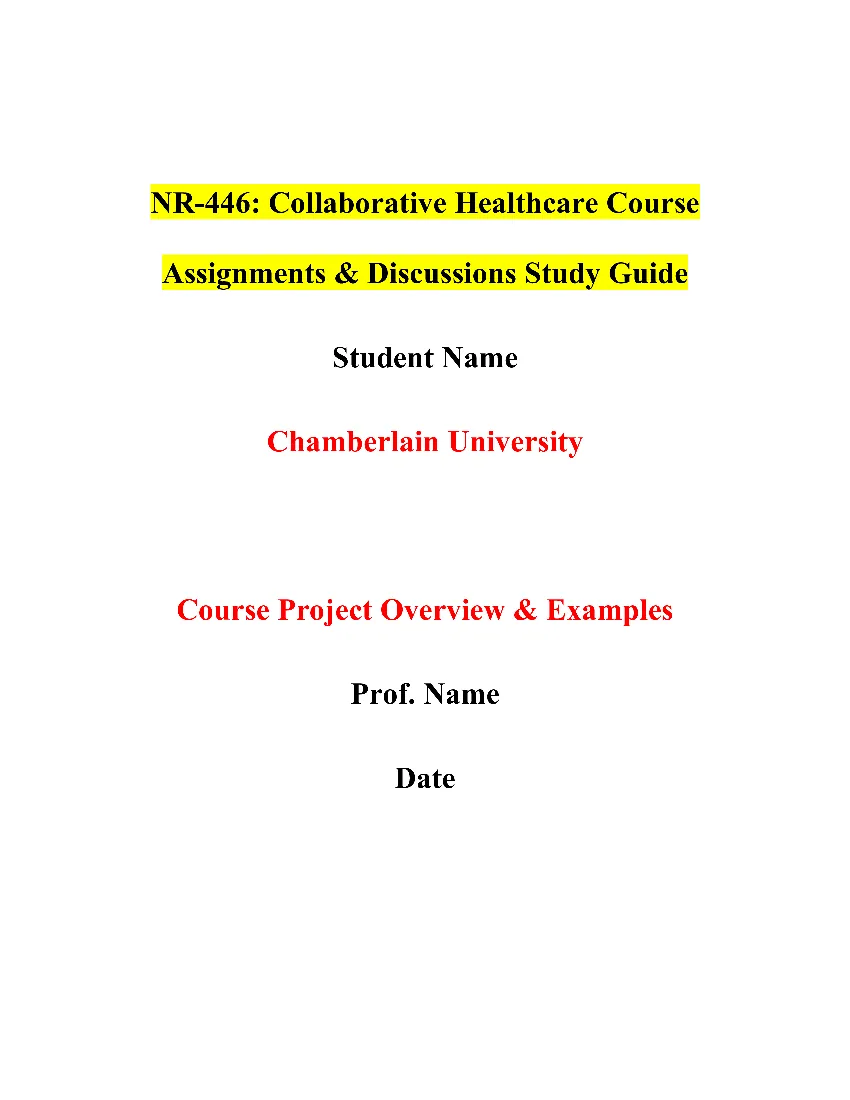 NR-446: Collaborative Healthcare Course Description
NR-446: Collaborative Healthcare Course Description

 NR-447: Collaborative Leadership in Healthcare Course Description
NR-447: Collaborative Leadership in Healthcare Course Description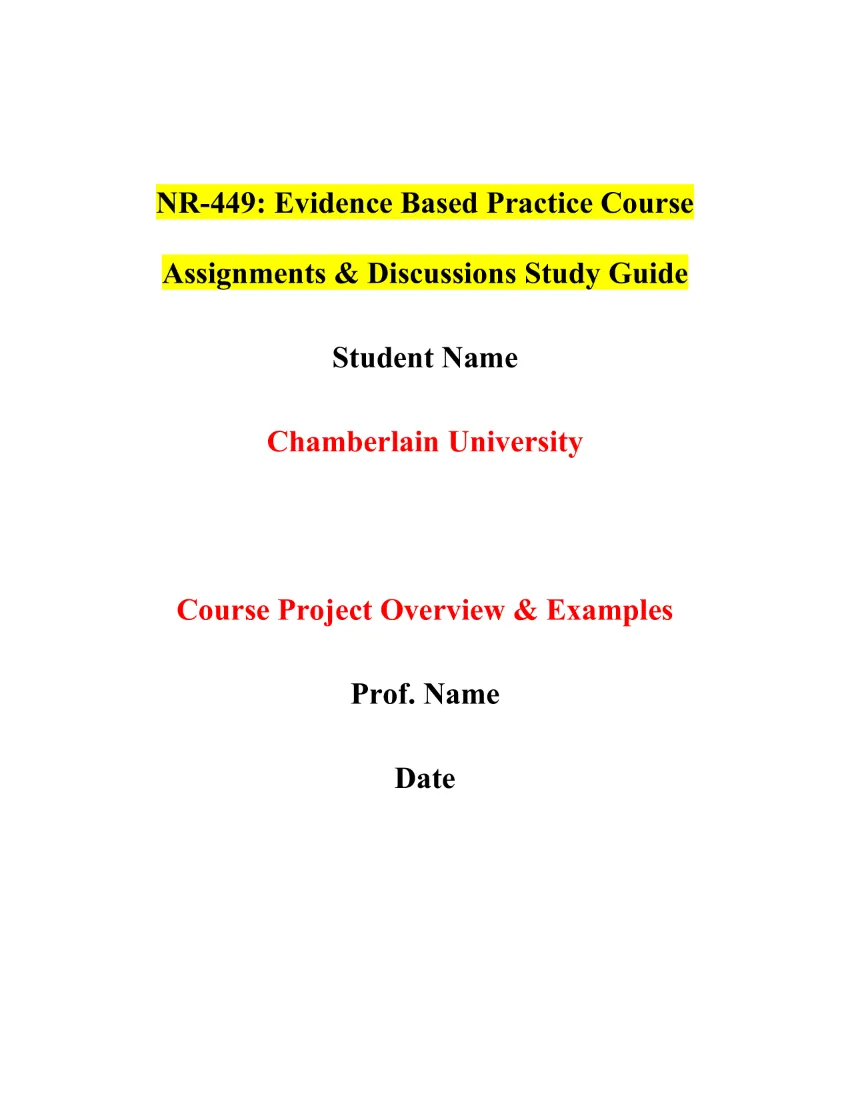 NR-449: Evidence Based Practice Course Description
NR-449: Evidence Based Practice Course Description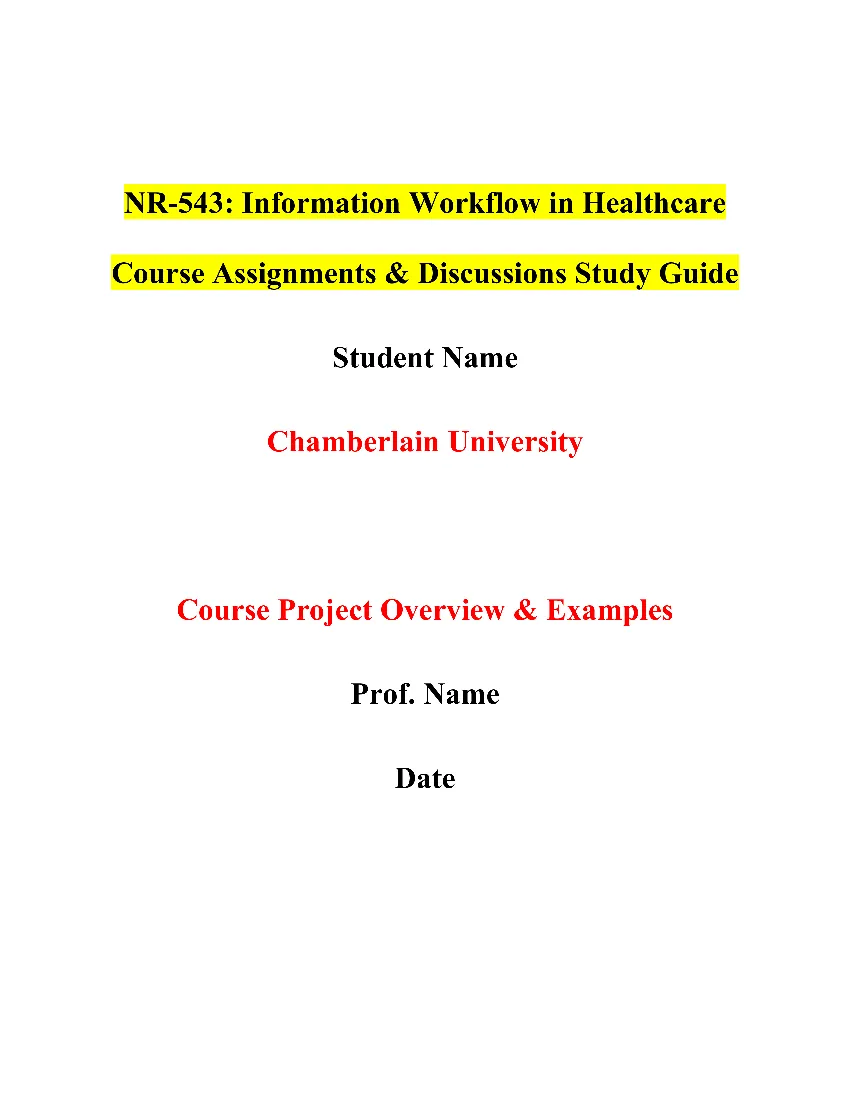 NR-543: Information Workflow in Healthcare Course Description
NR-543: Information Workflow in Healthcare Course Description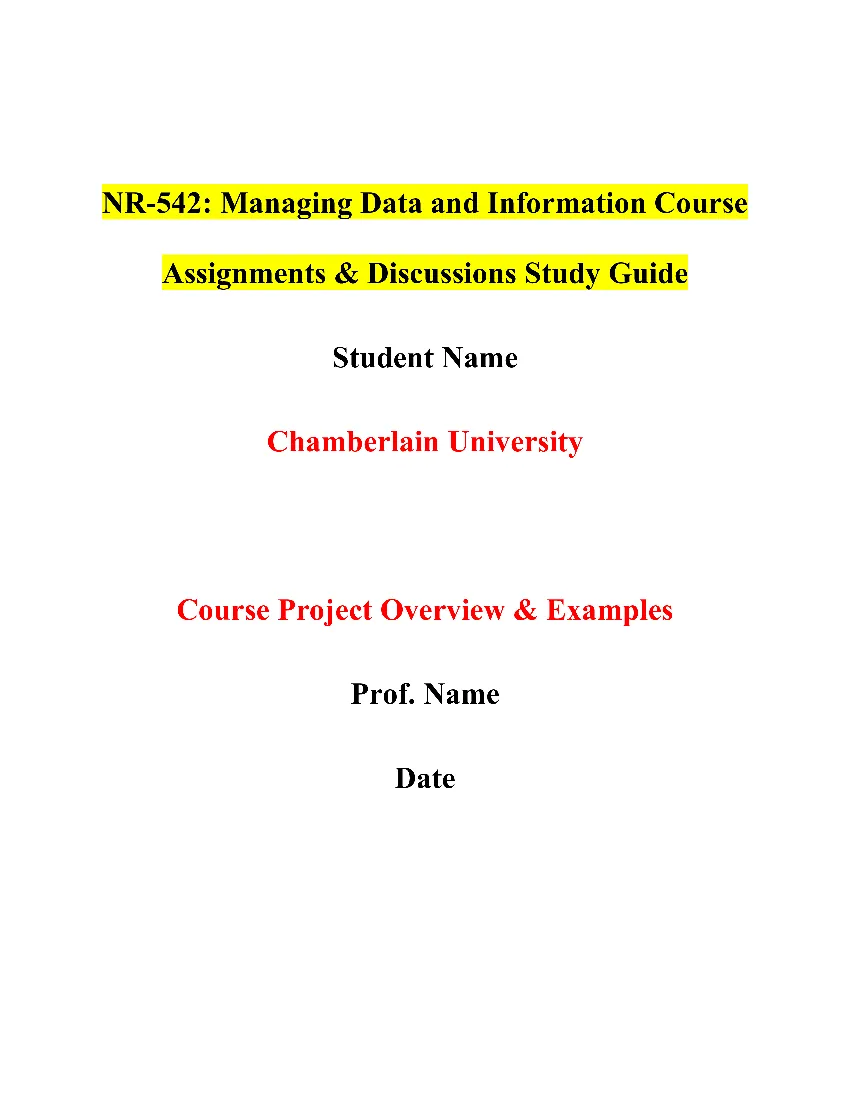 NR-542: Managing Data and Information Course Description
NR-542: Managing Data and Information Course Description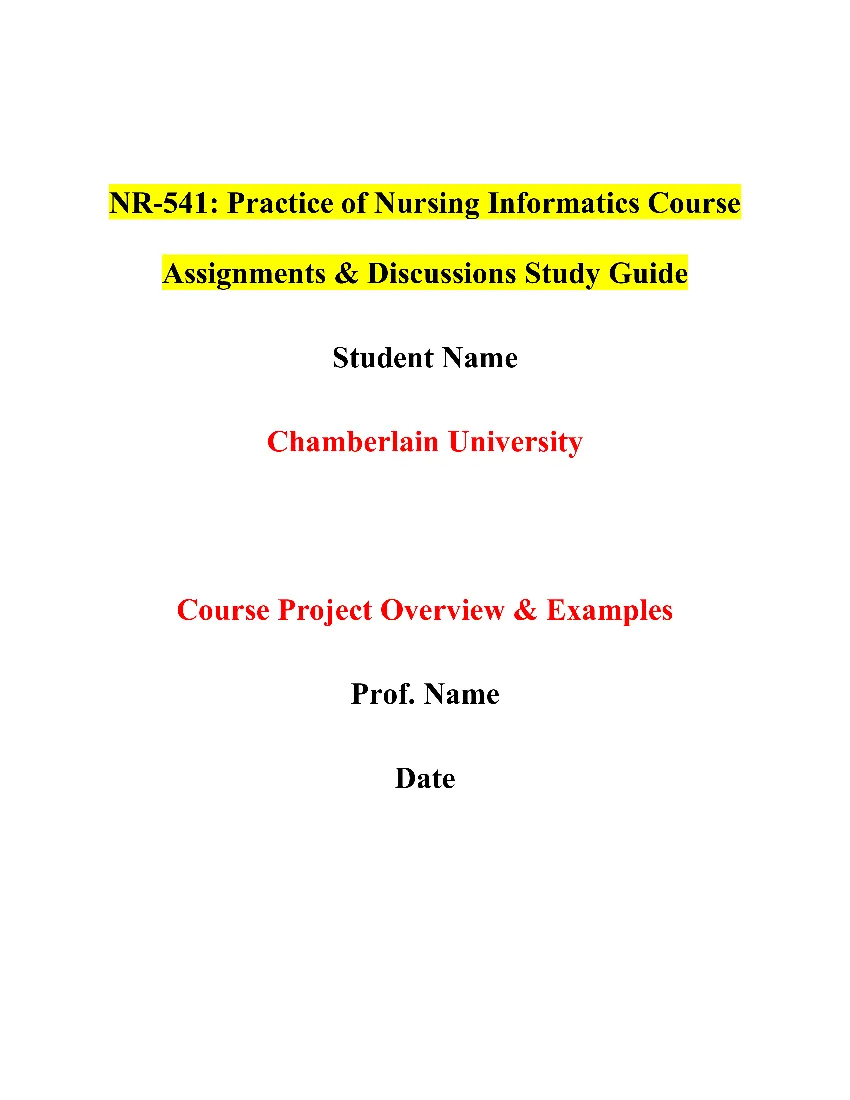 NR-541: Practice of Nursing Informatics Course Description
NR-541: Practice of Nursing Informatics Course Description NR-536: Advanced Health Assessment Pathophysiology and Pharmacology for Advanced Nursing Practice Course Description
NR-536: Advanced Health Assessment Pathophysiology and Pharmacology for Advanced Nursing Practice Course Description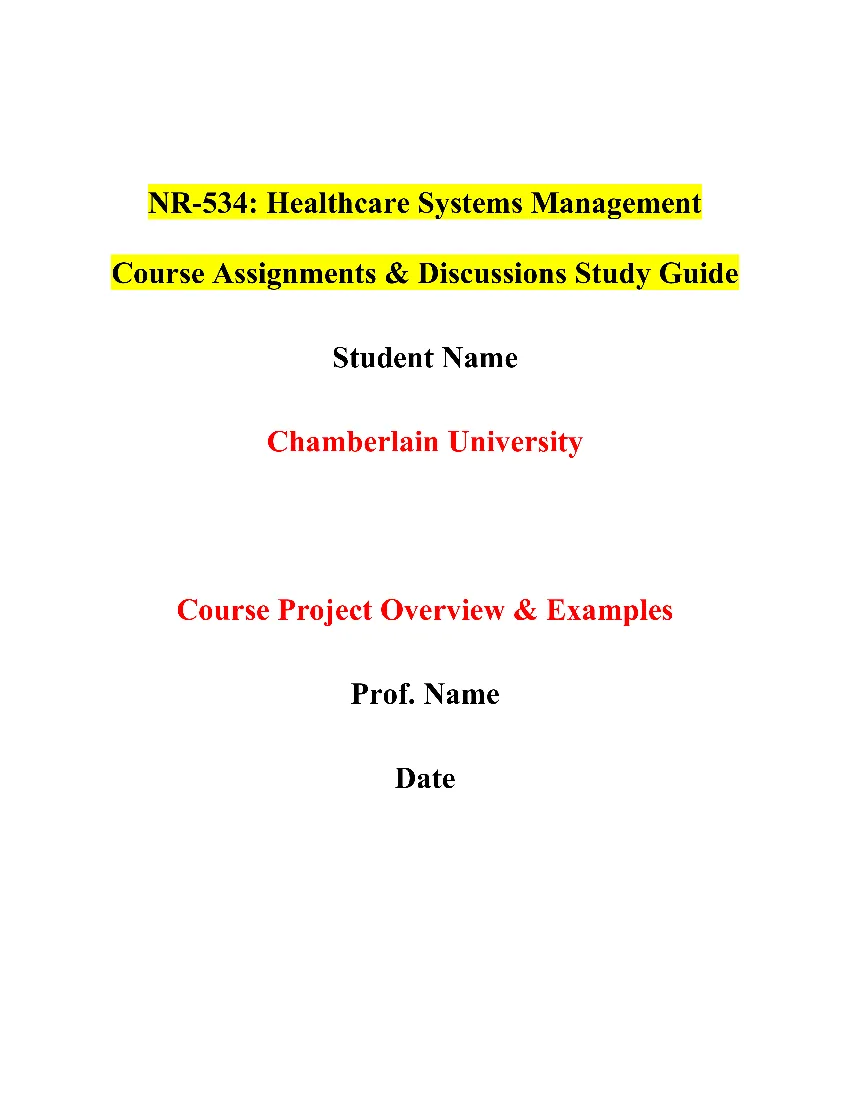 NR-534: Healthcare Systems Management Course Description
NR-534: Healthcare Systems Management Course Description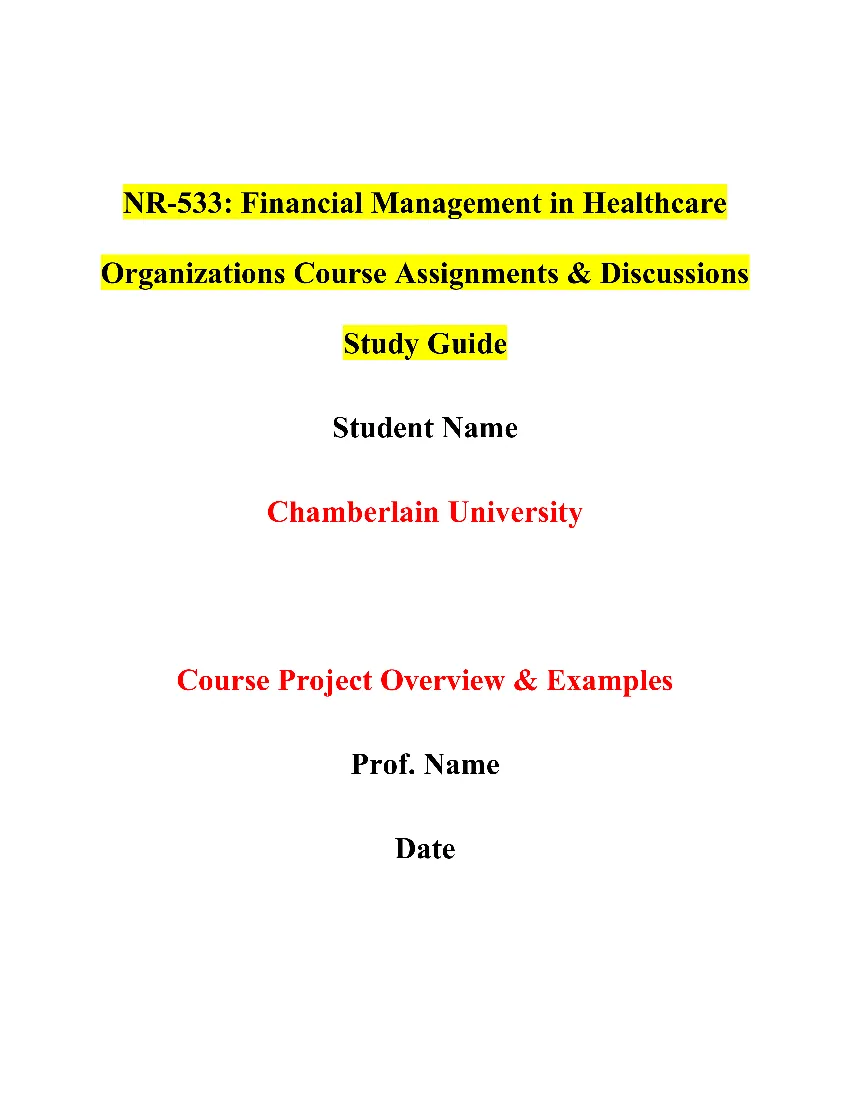 NR-533: Financial Management in Healthcare Organizations Course Description
NR-533: Financial Management in Healthcare Organizations Course Description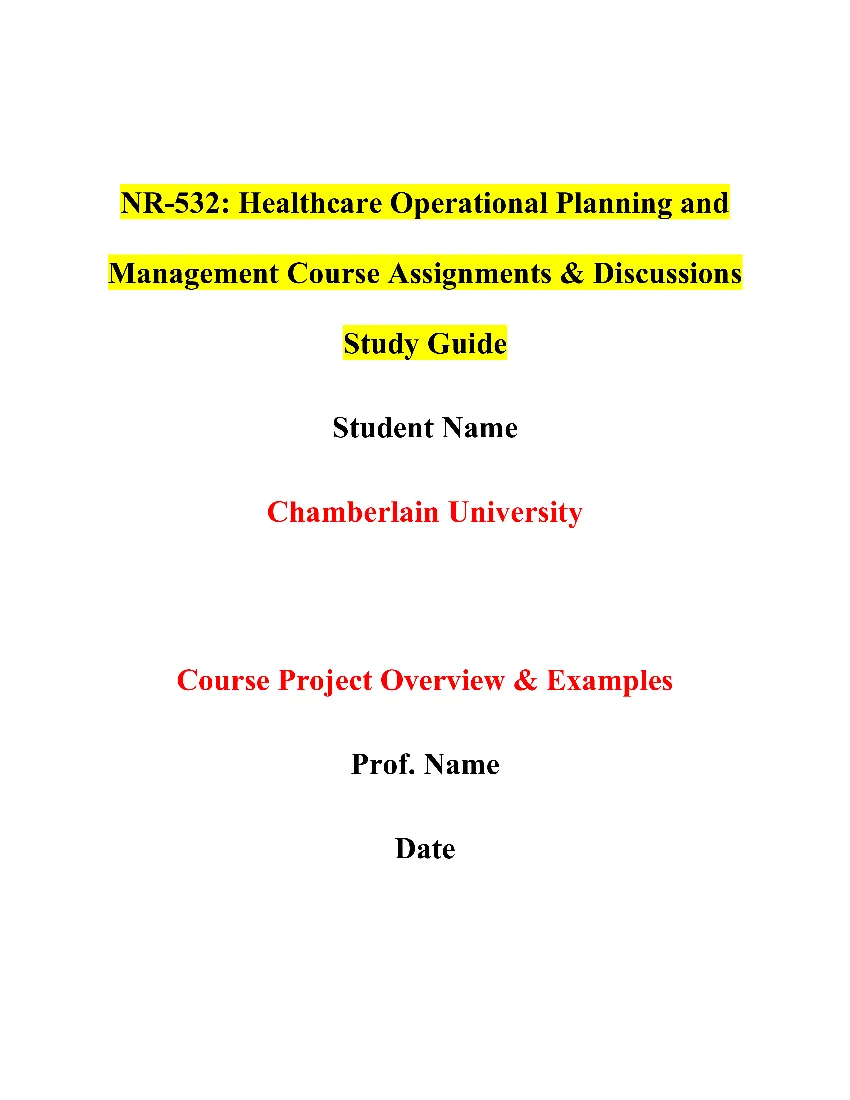 NR-532: Healthcare Operational Planning and Management Course Description
NR-532: Healthcare Operational Planning and Management Course Description